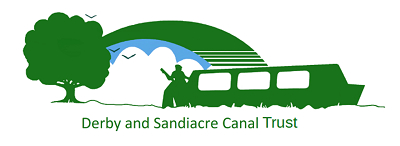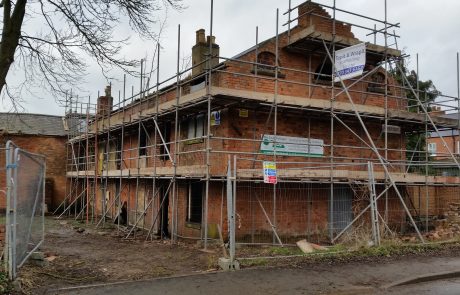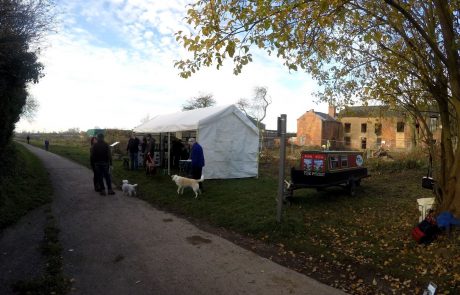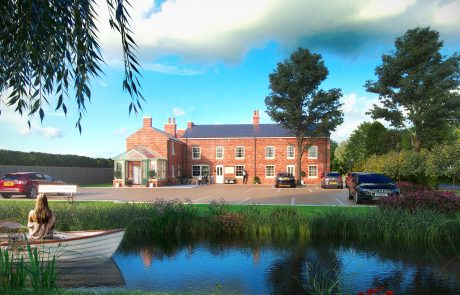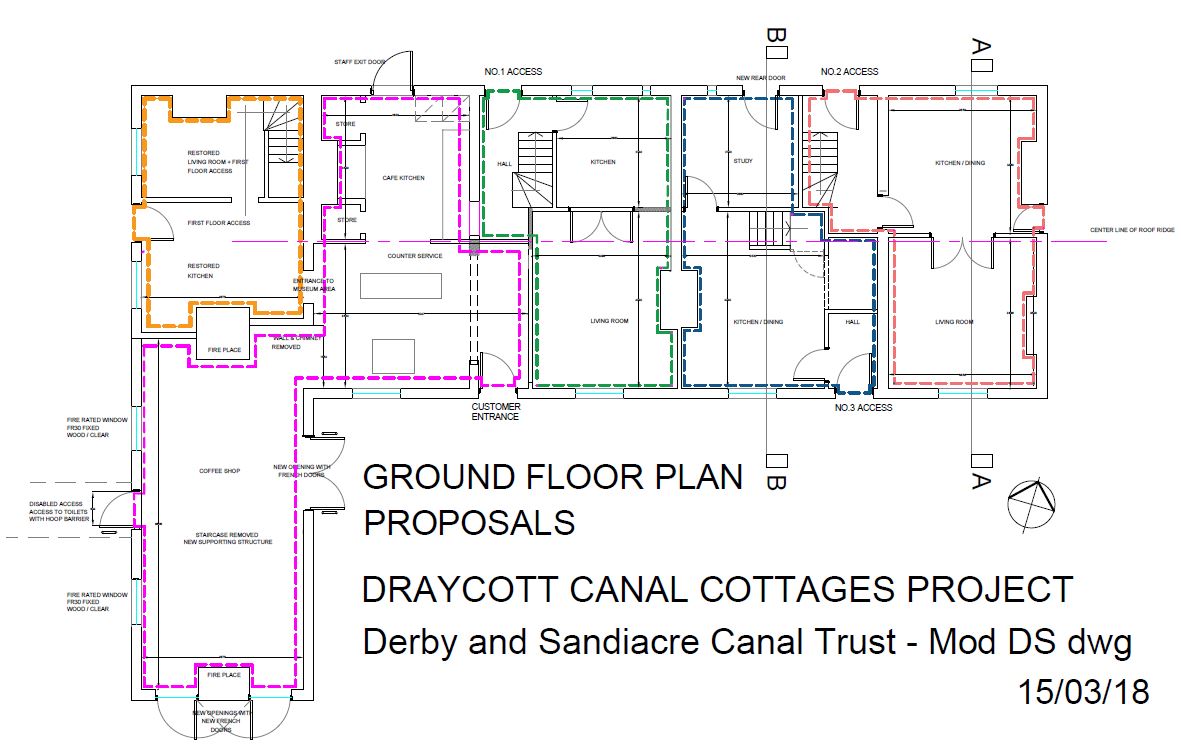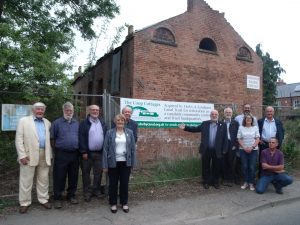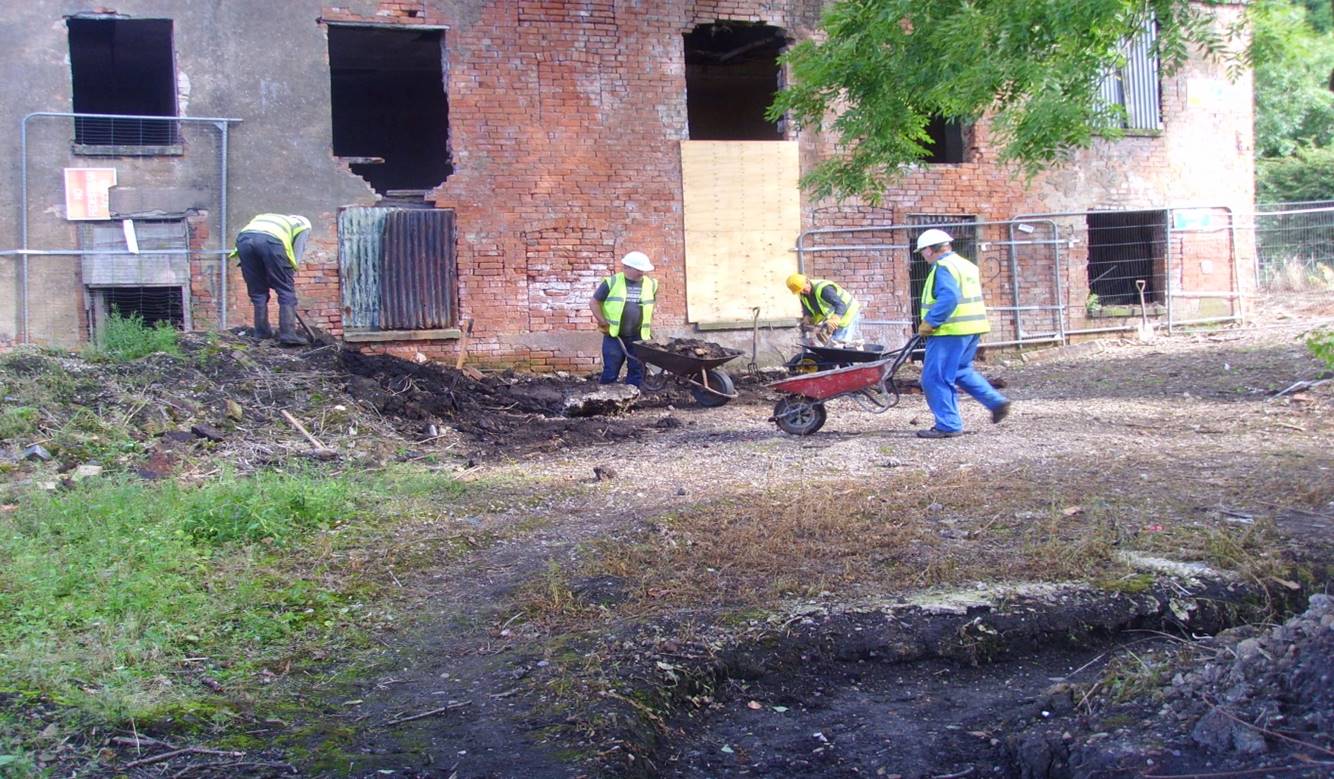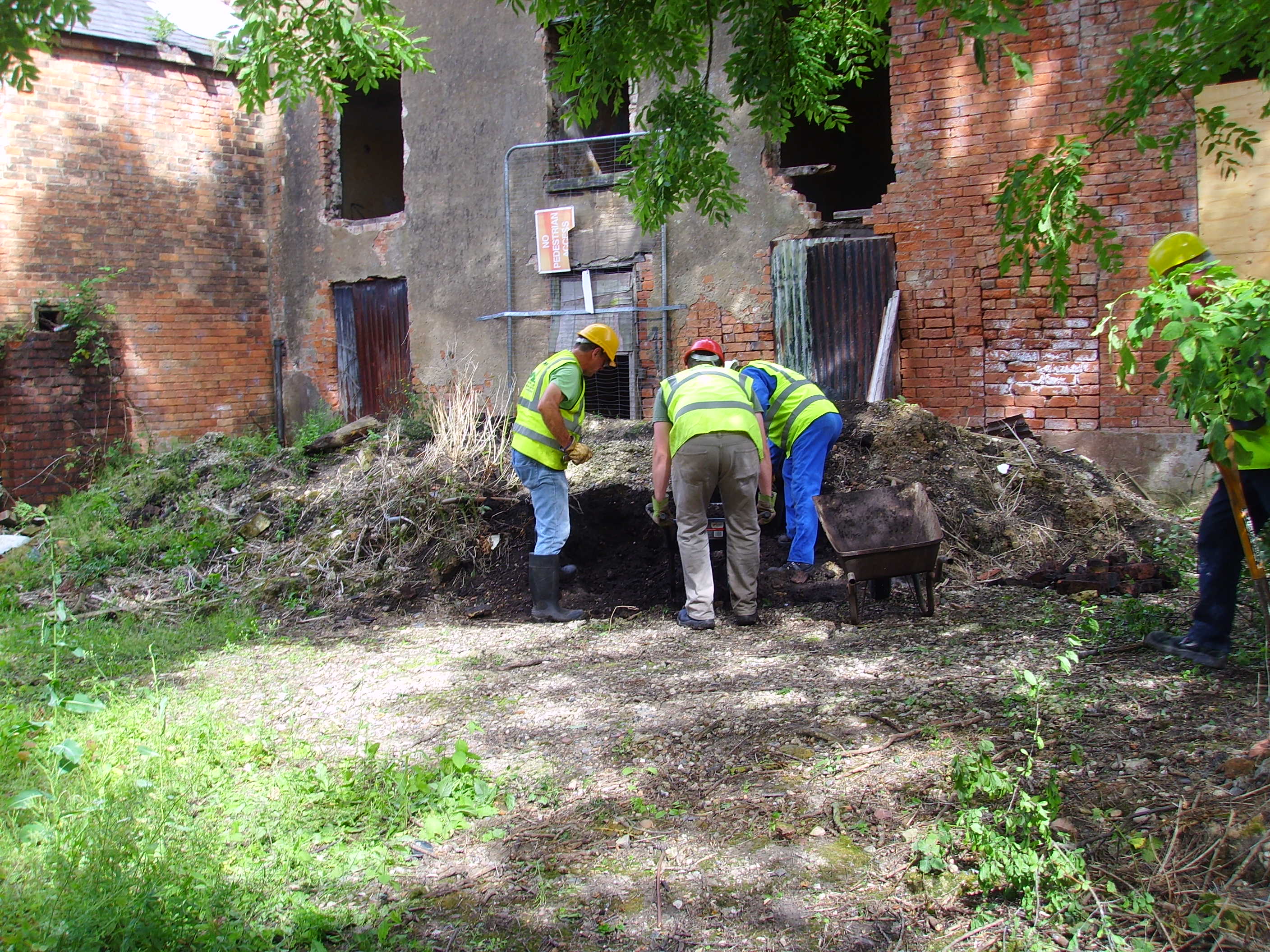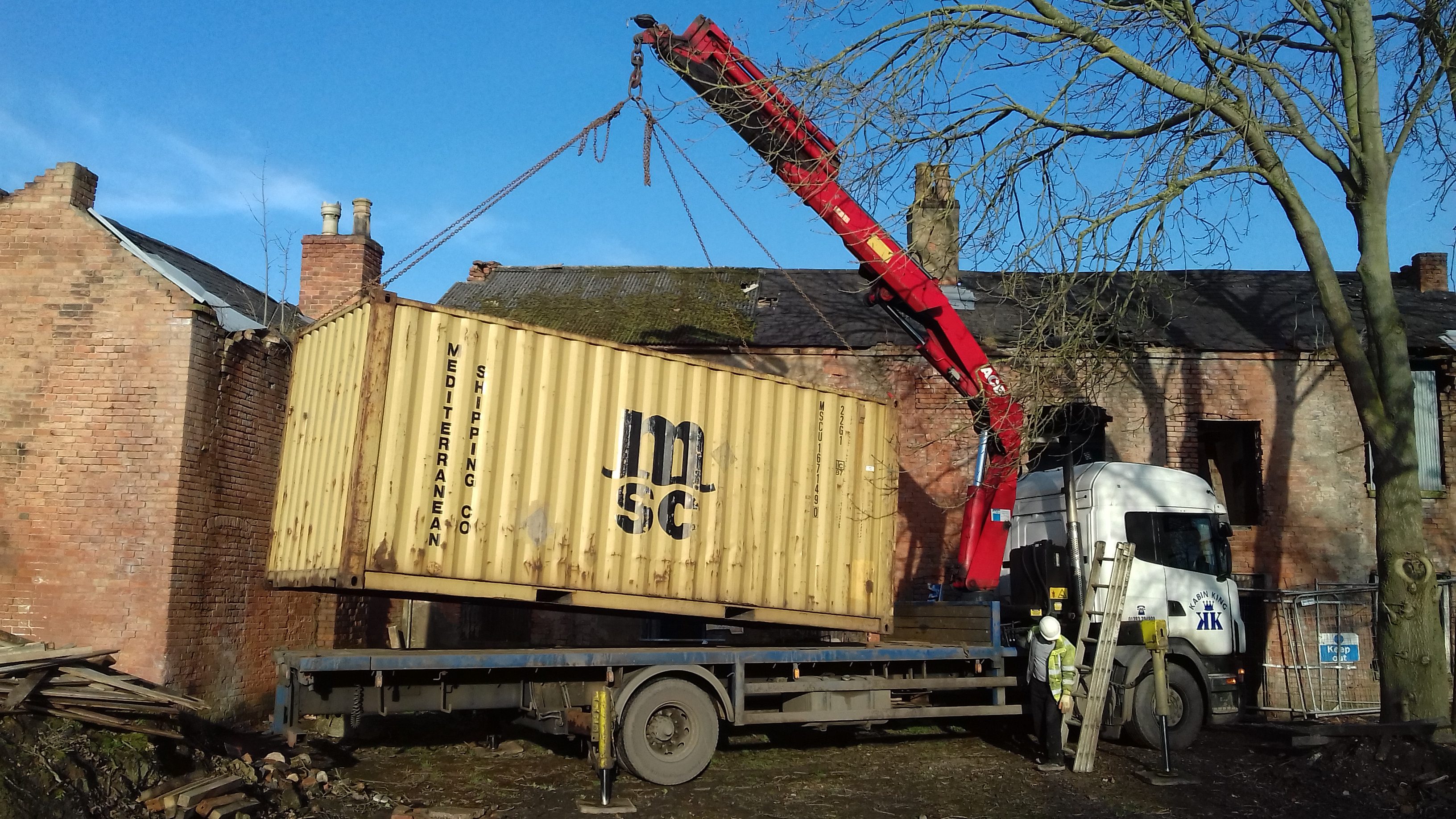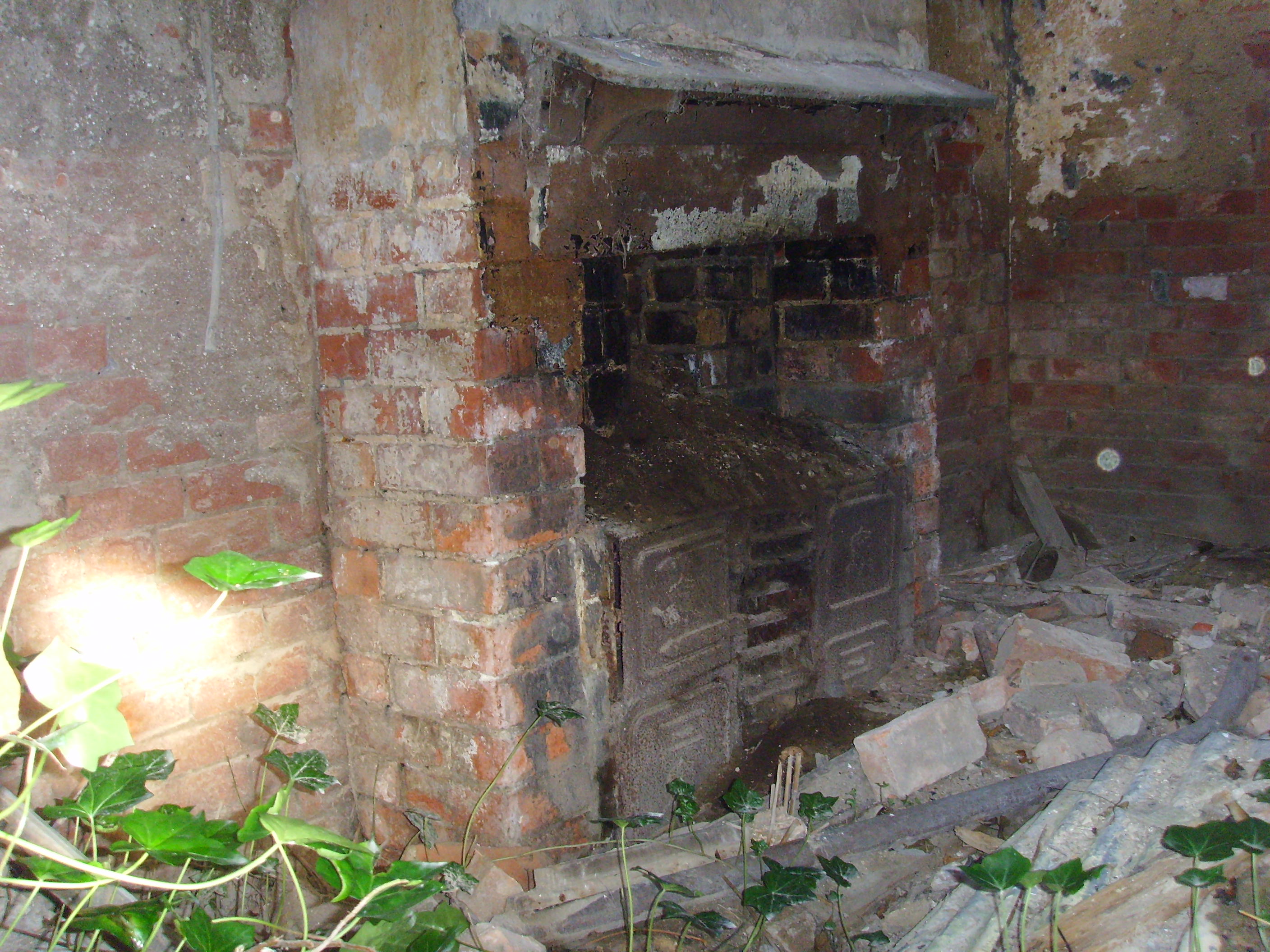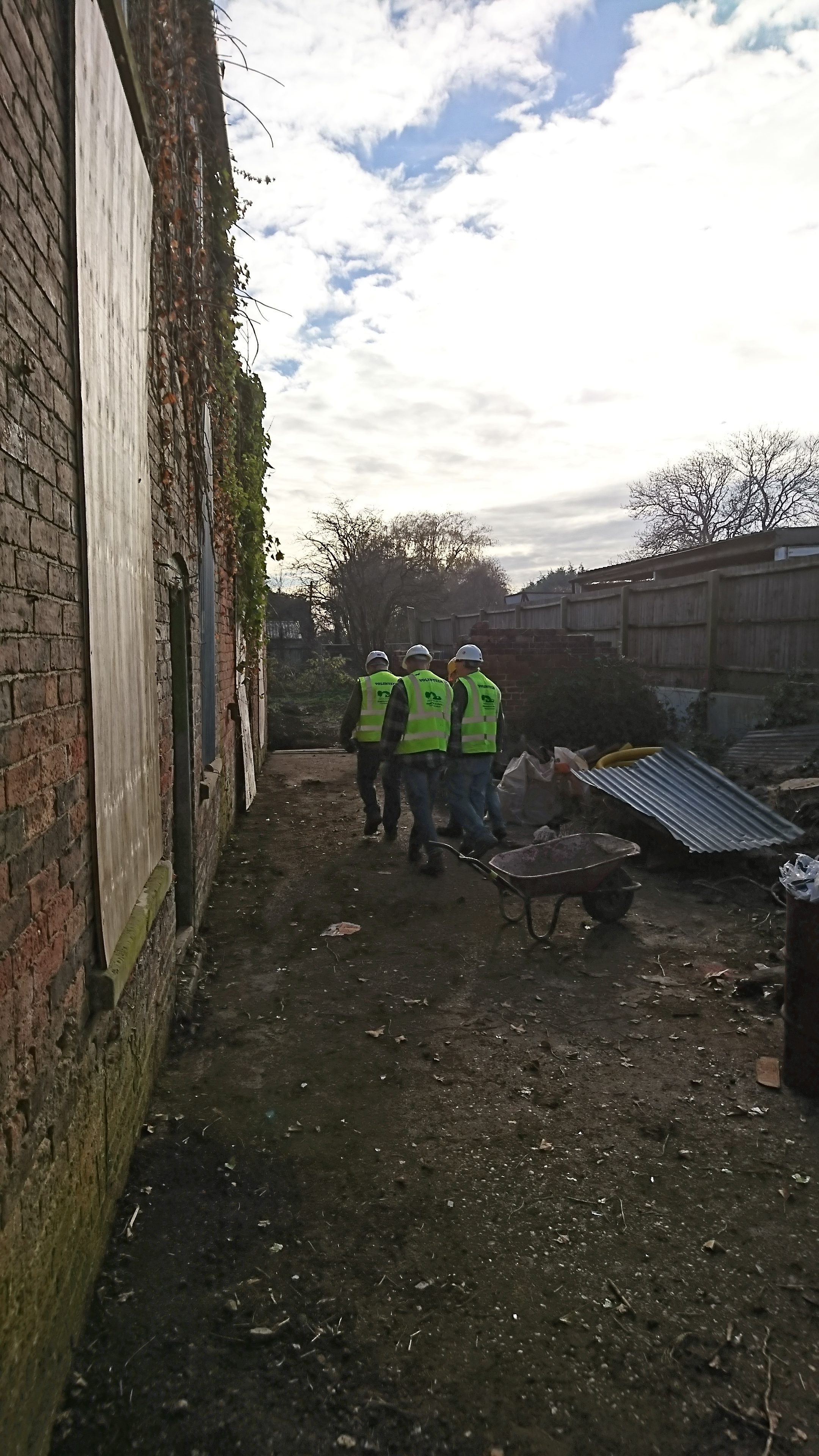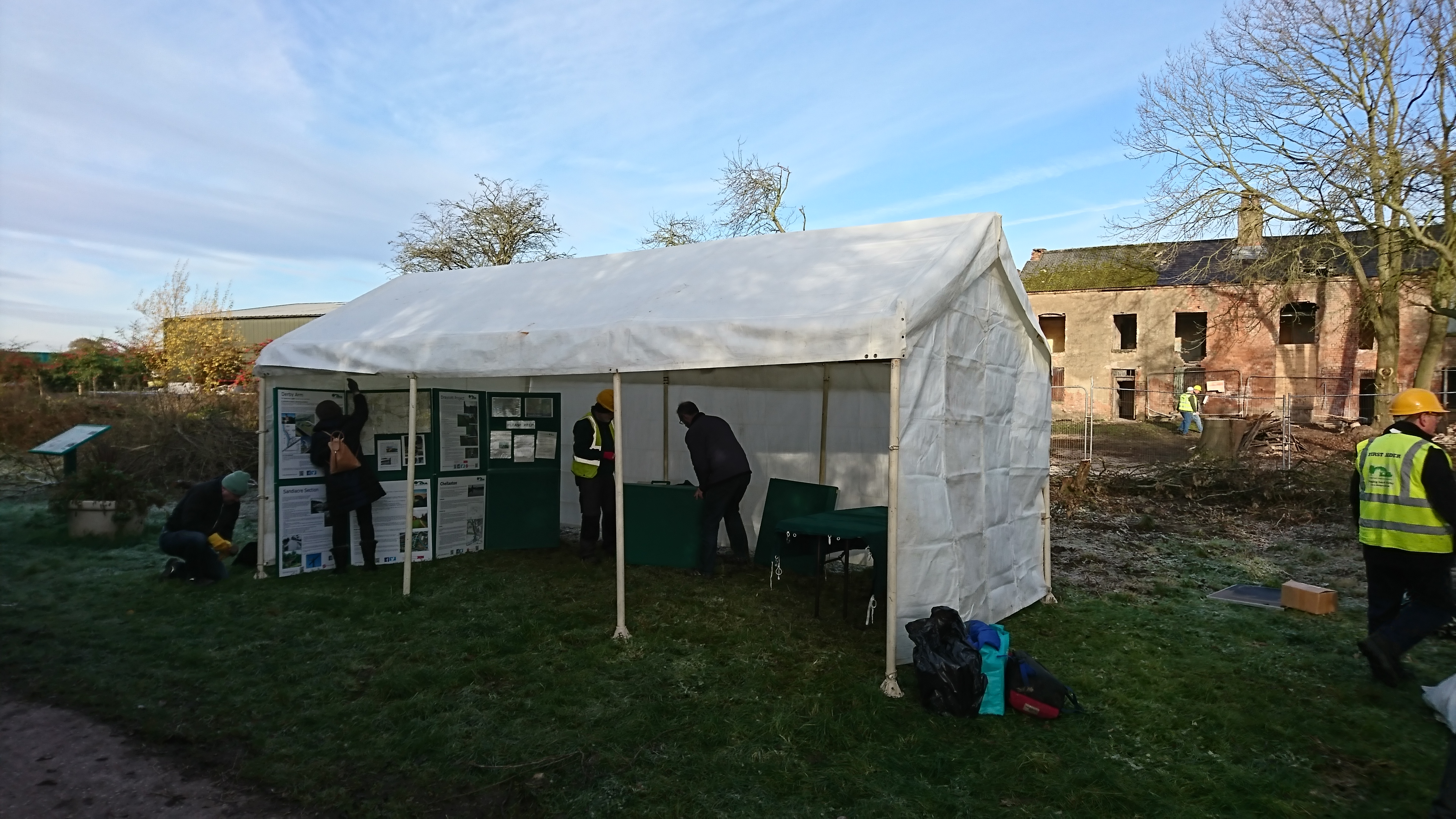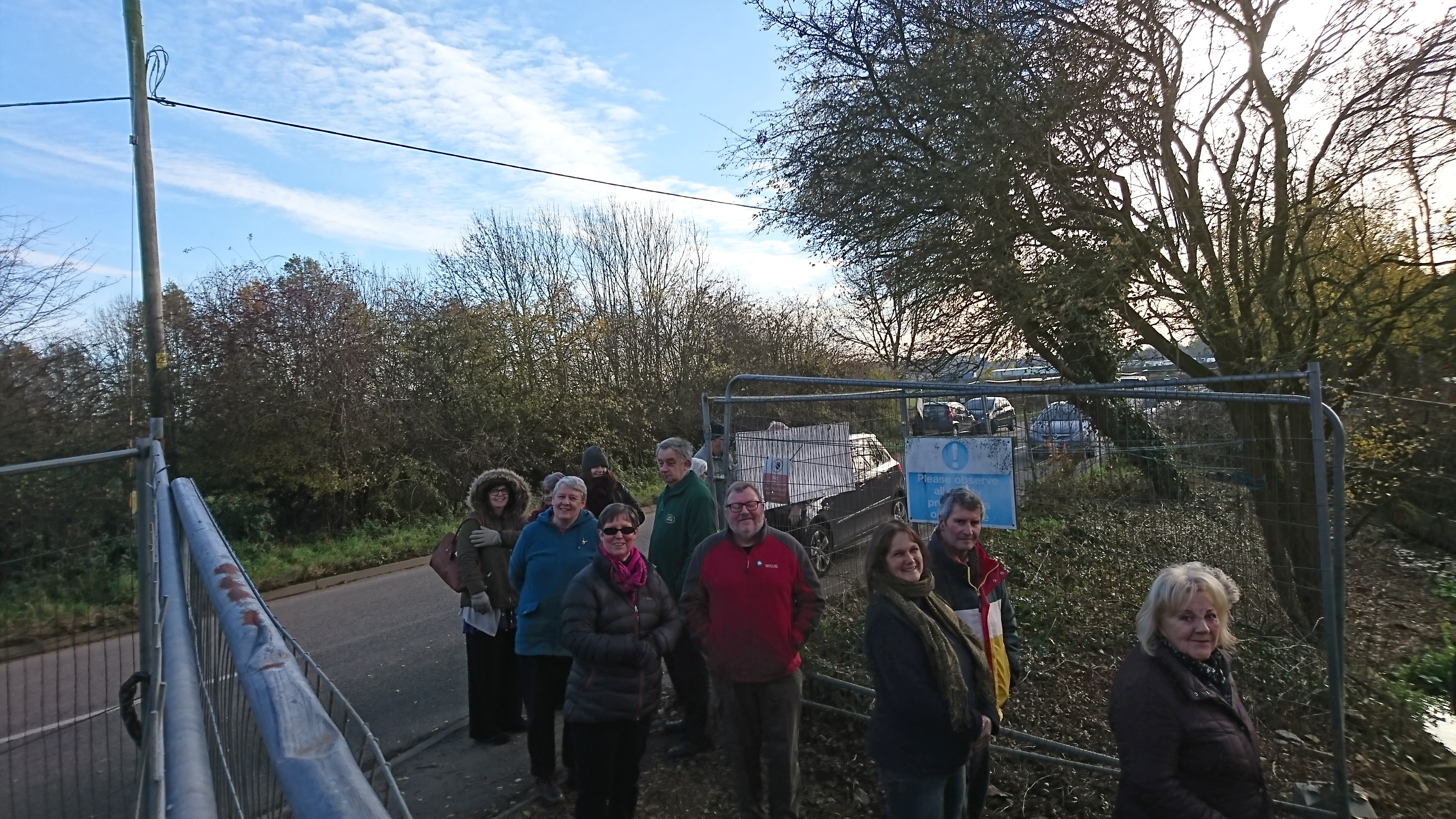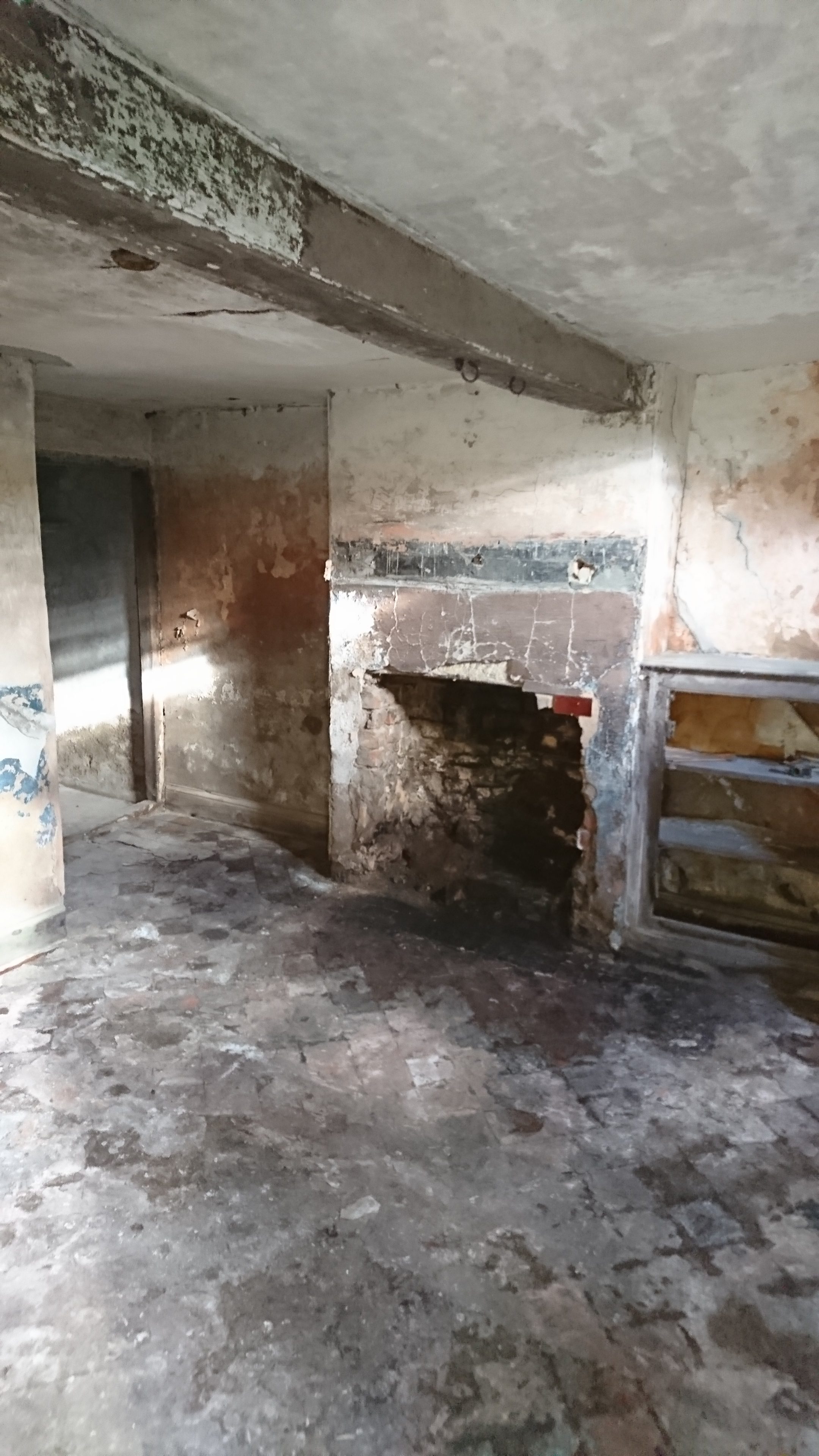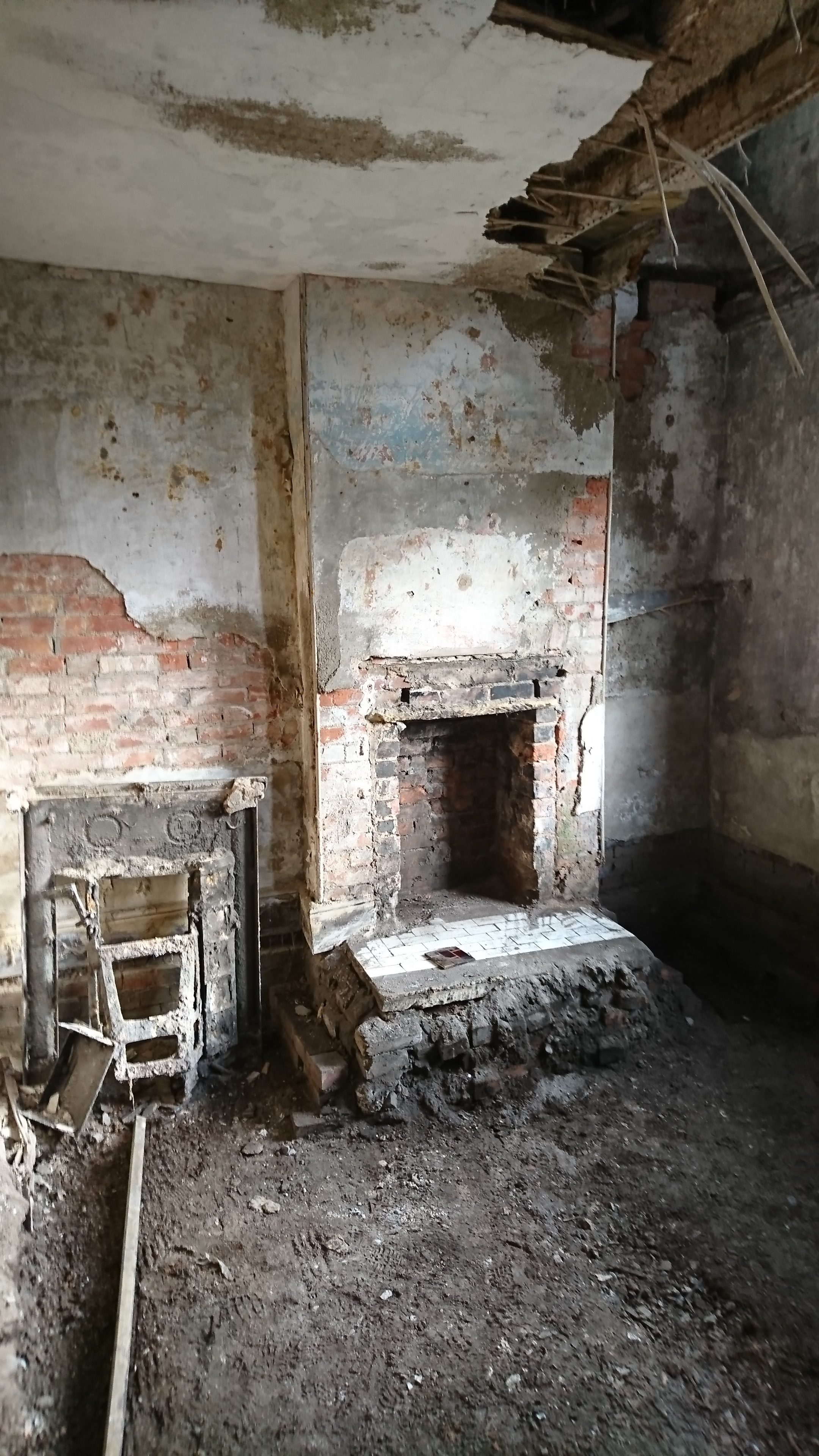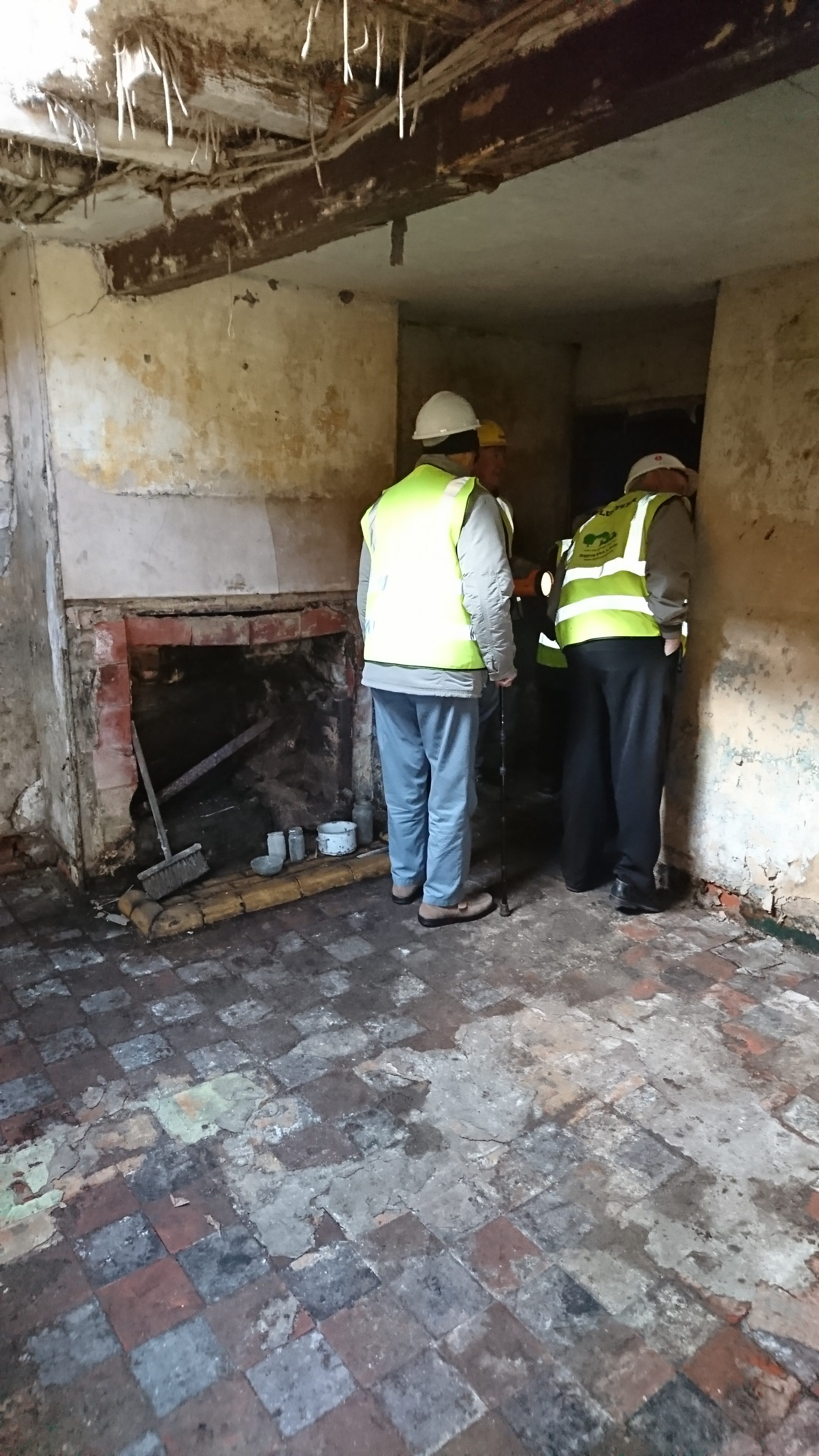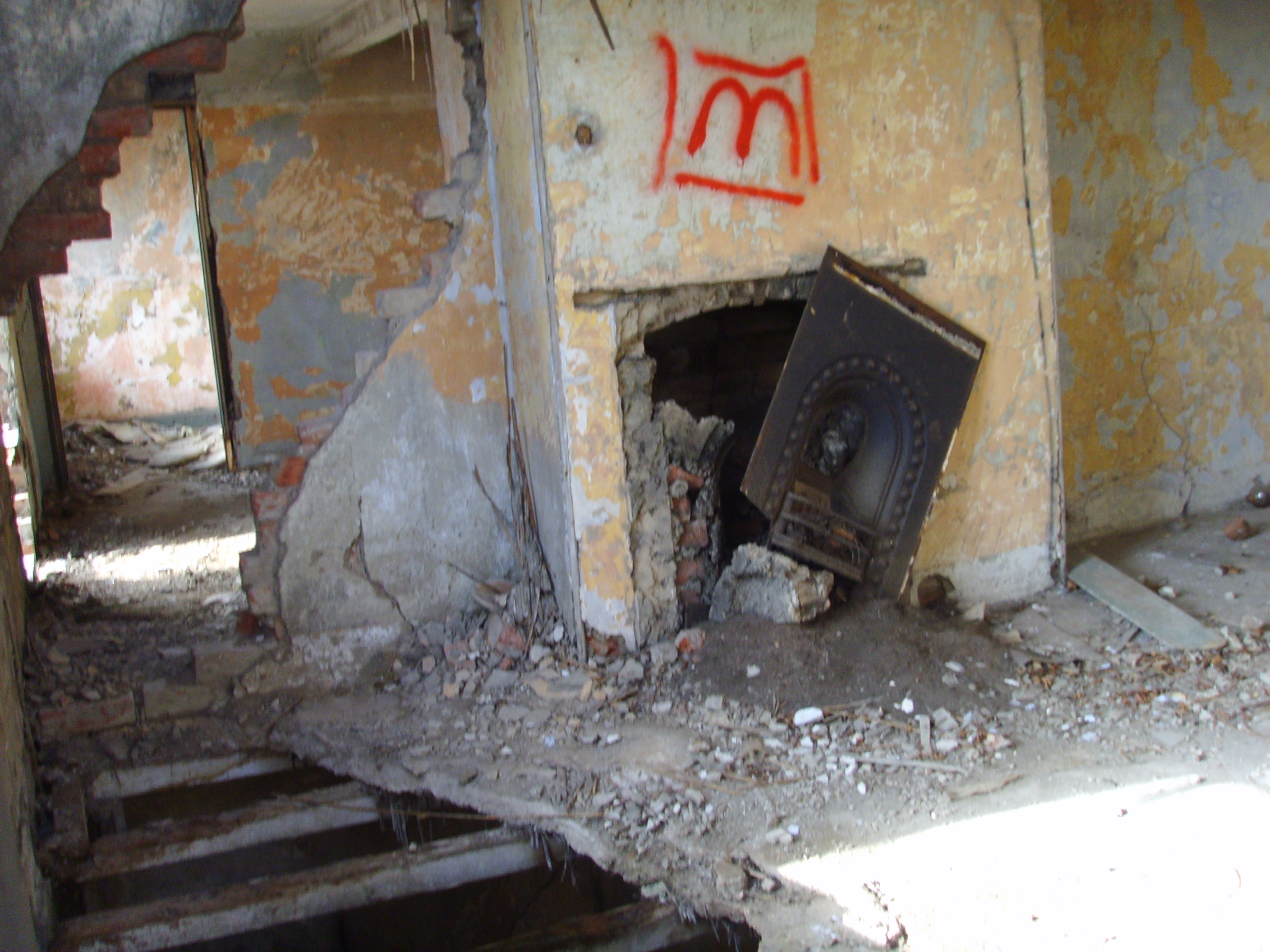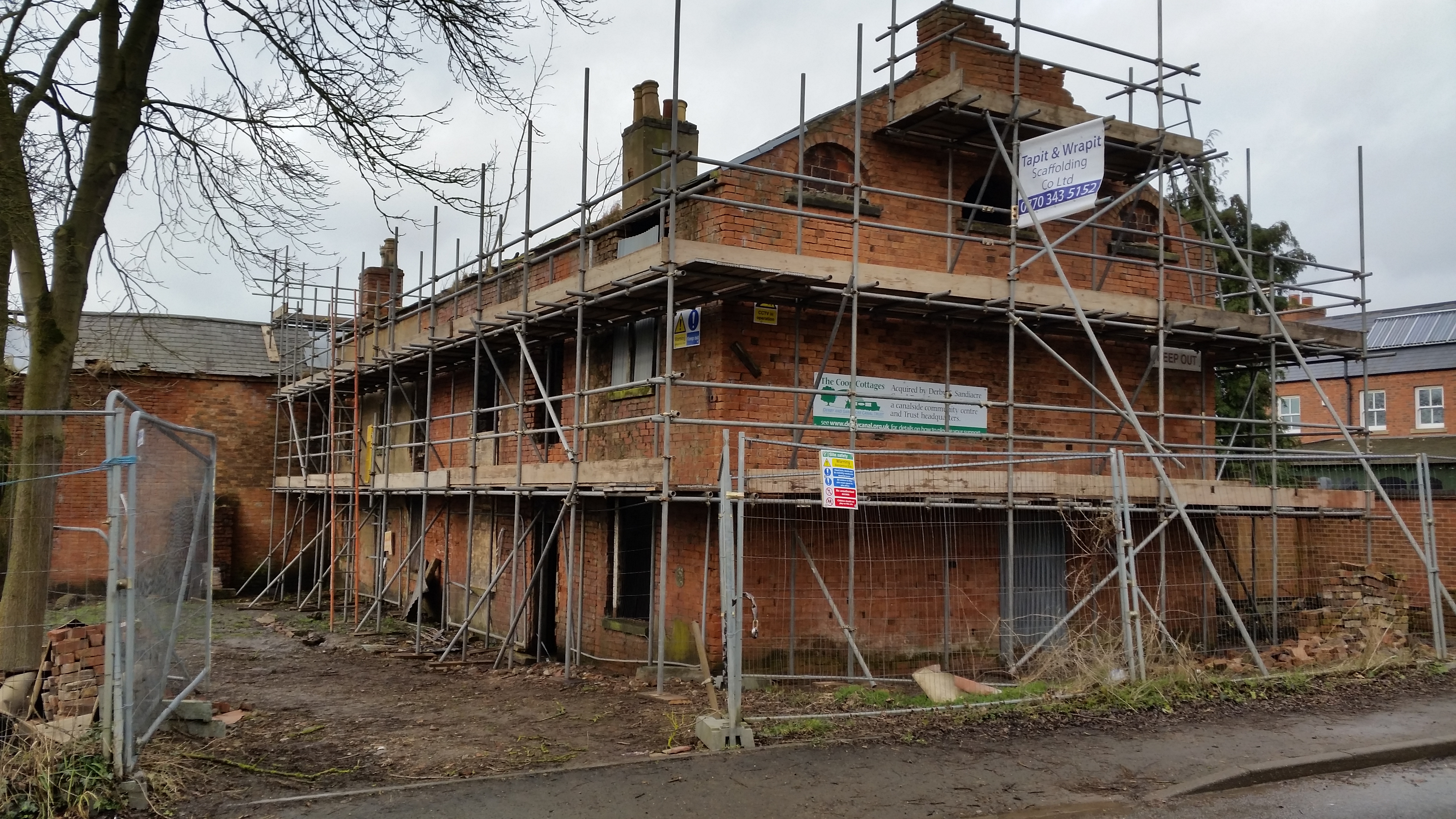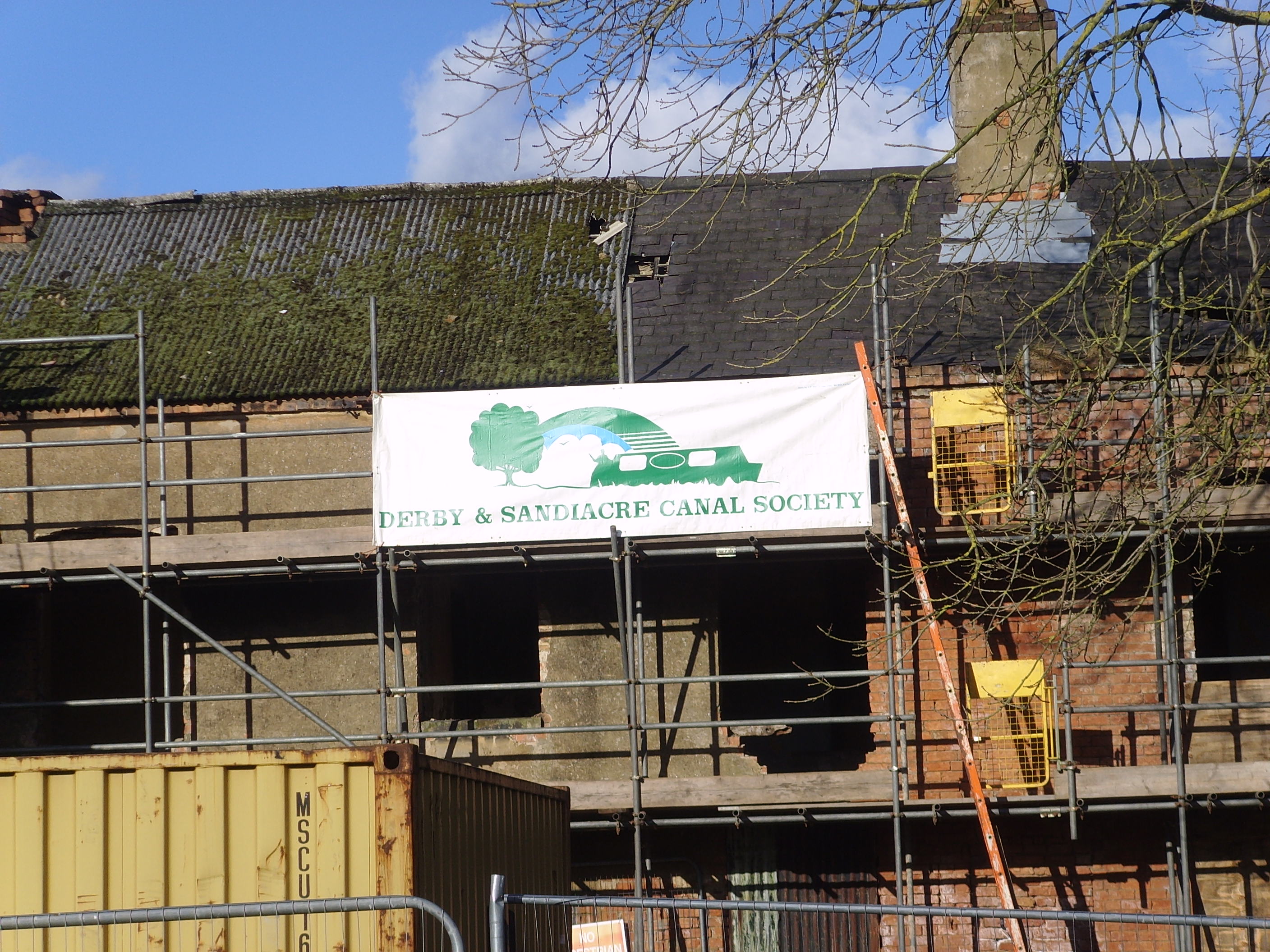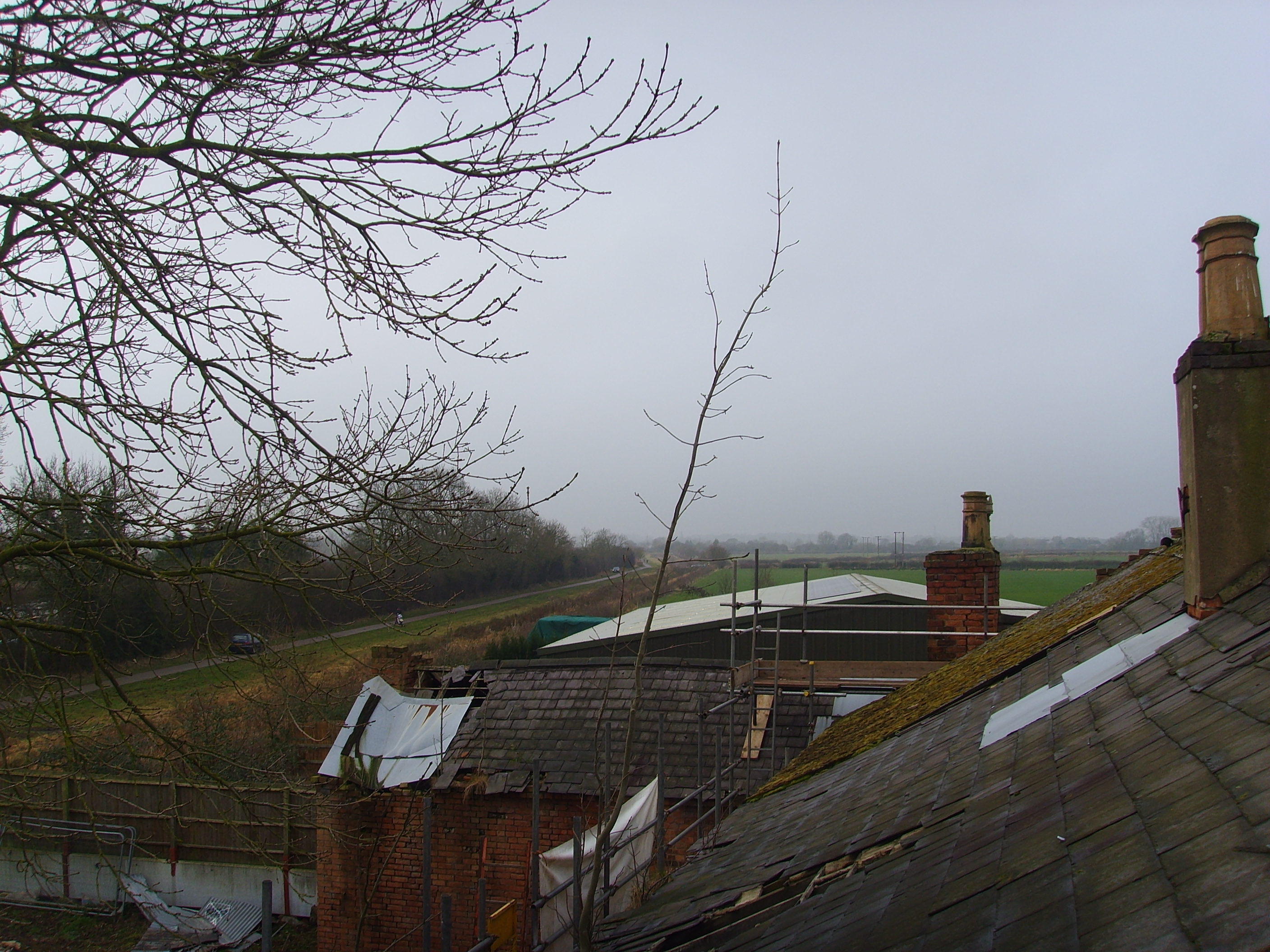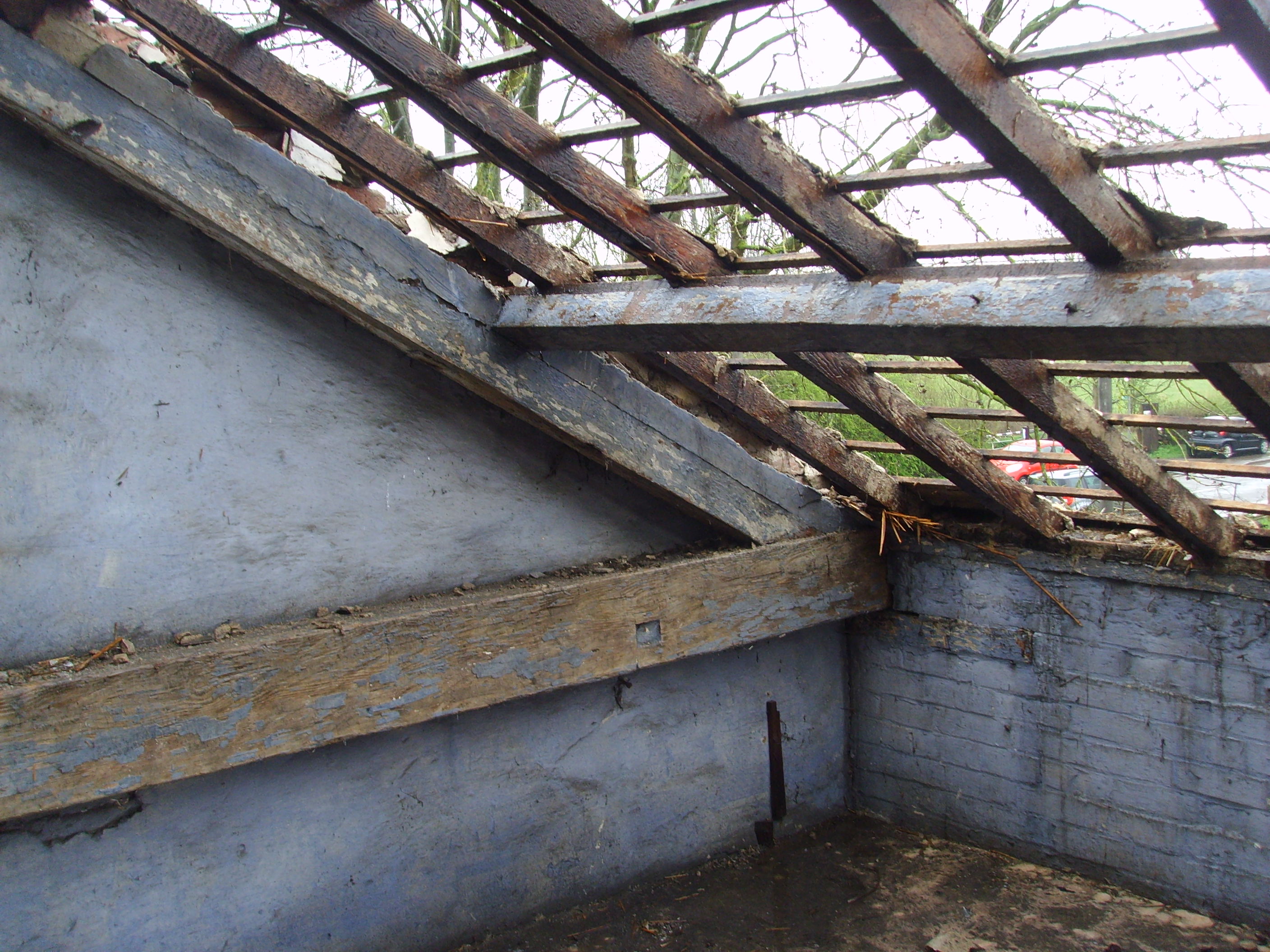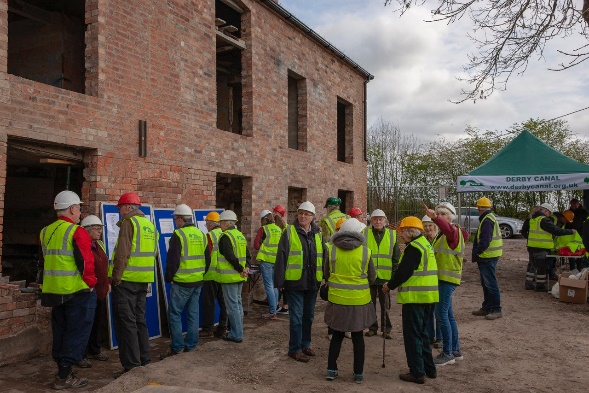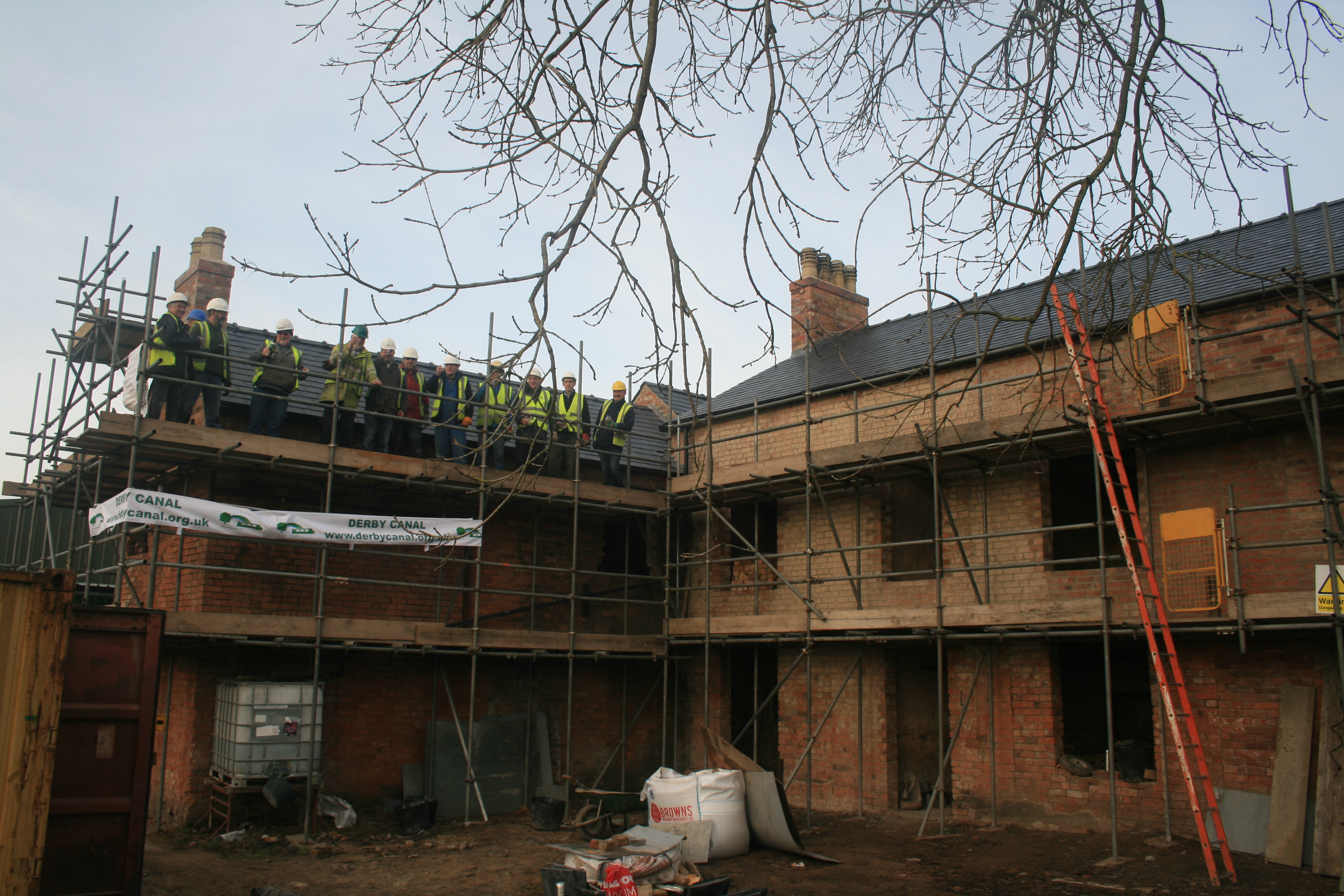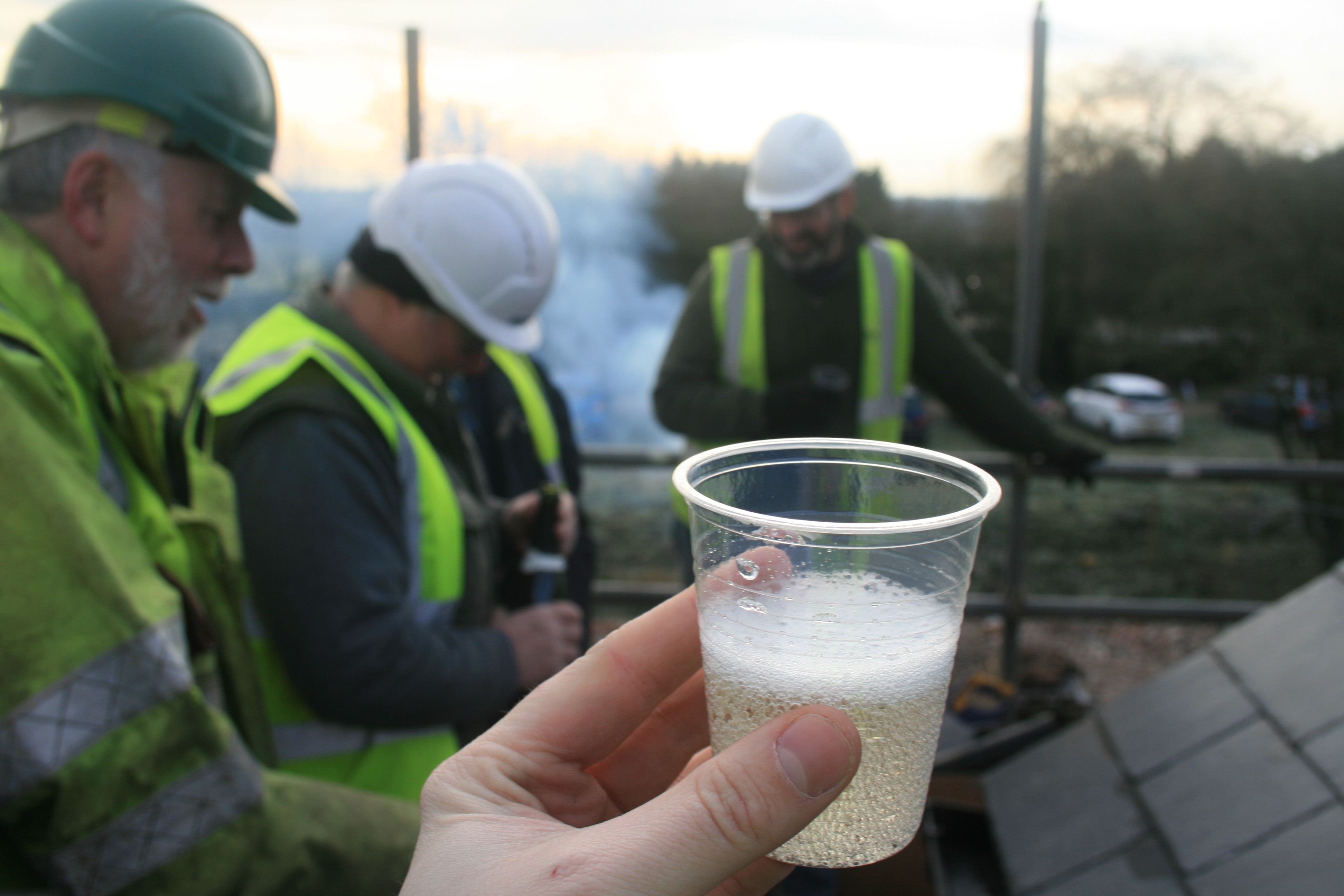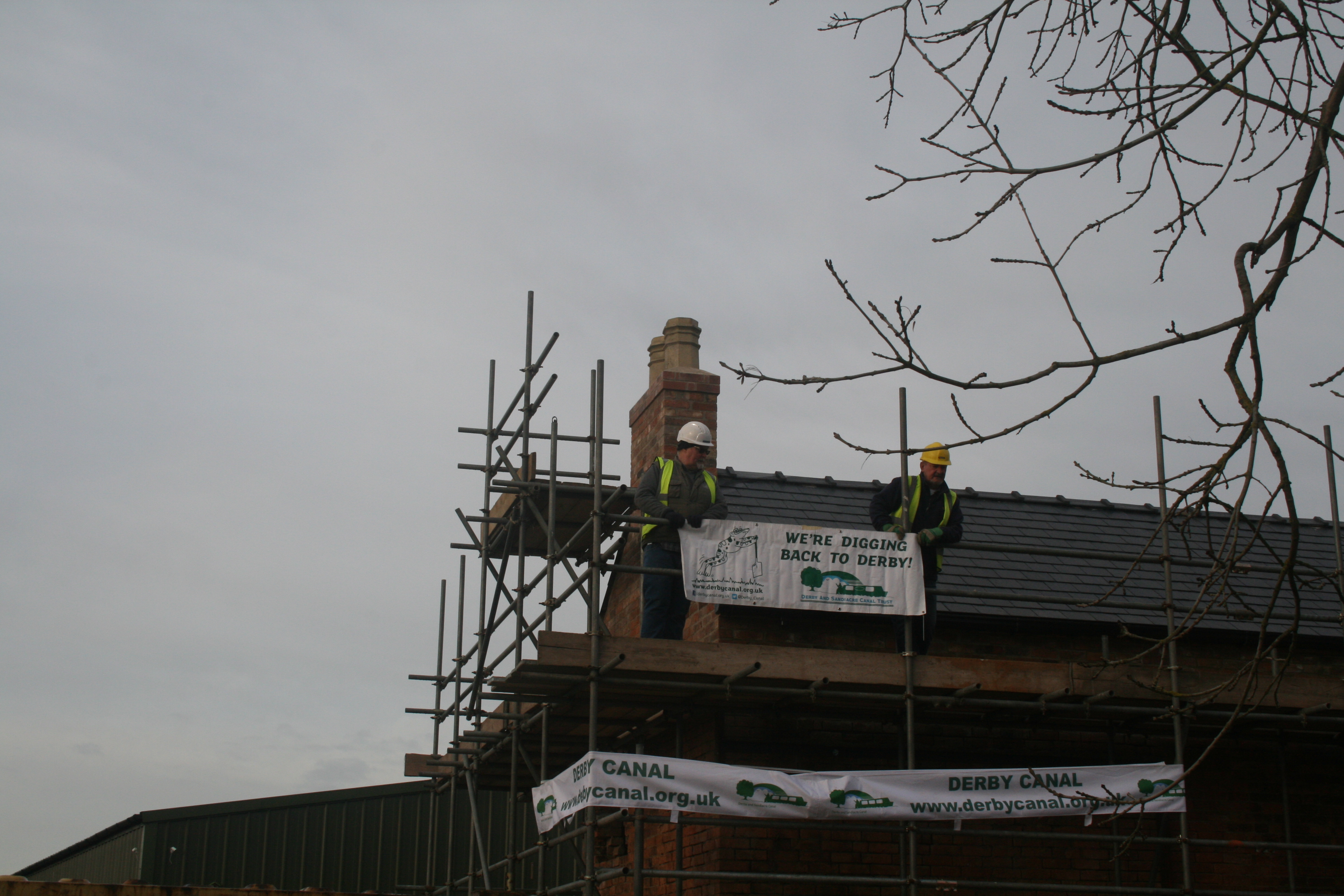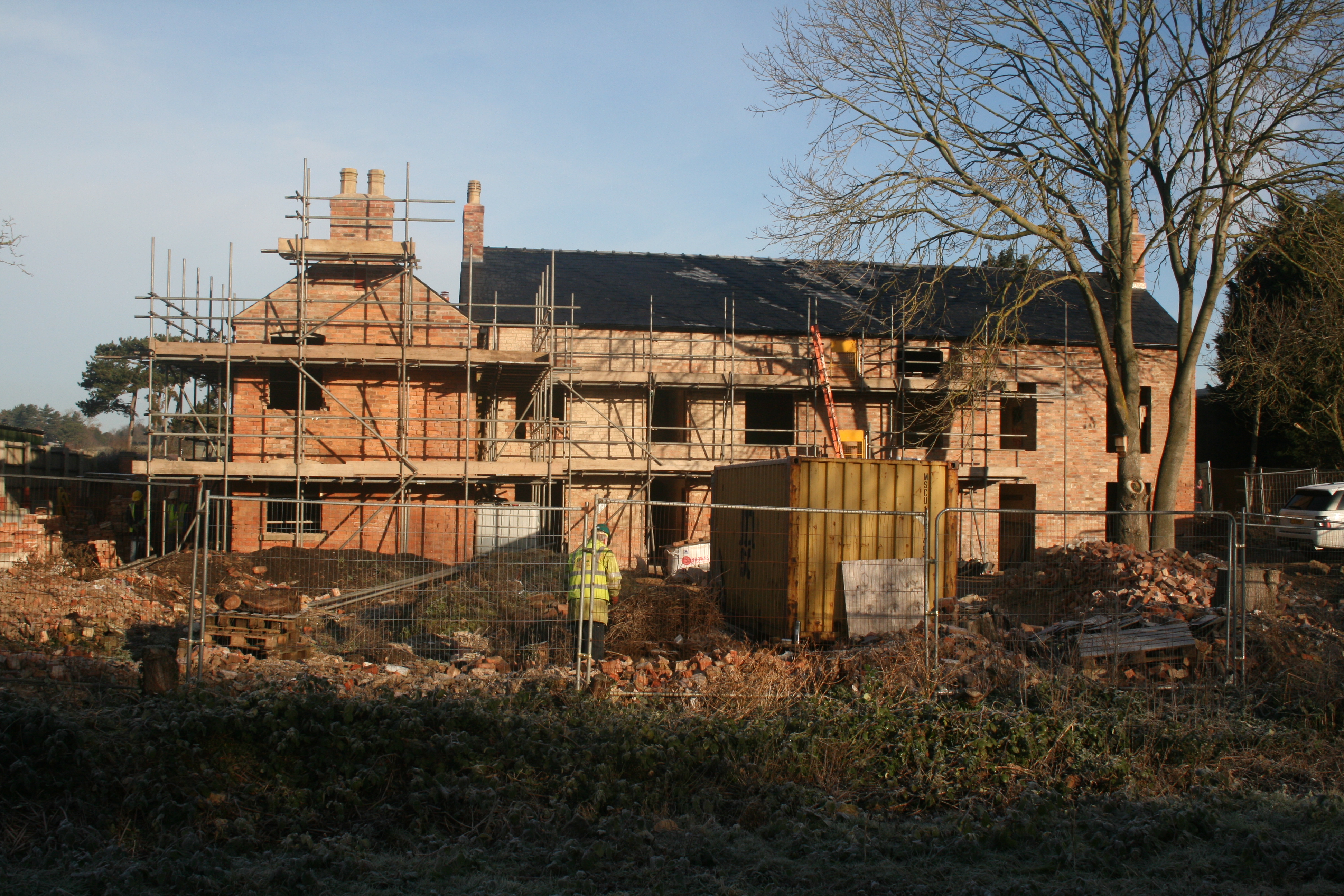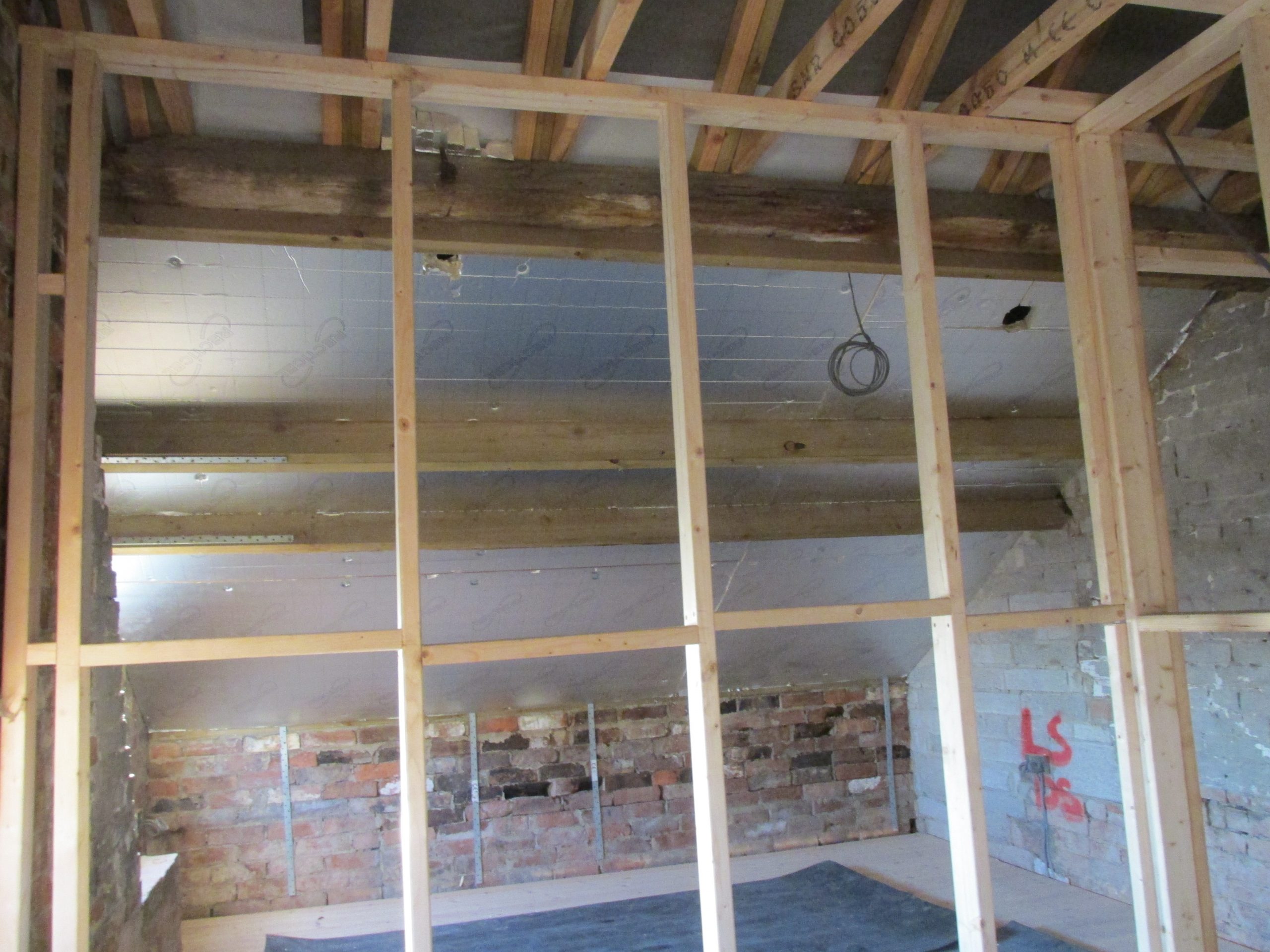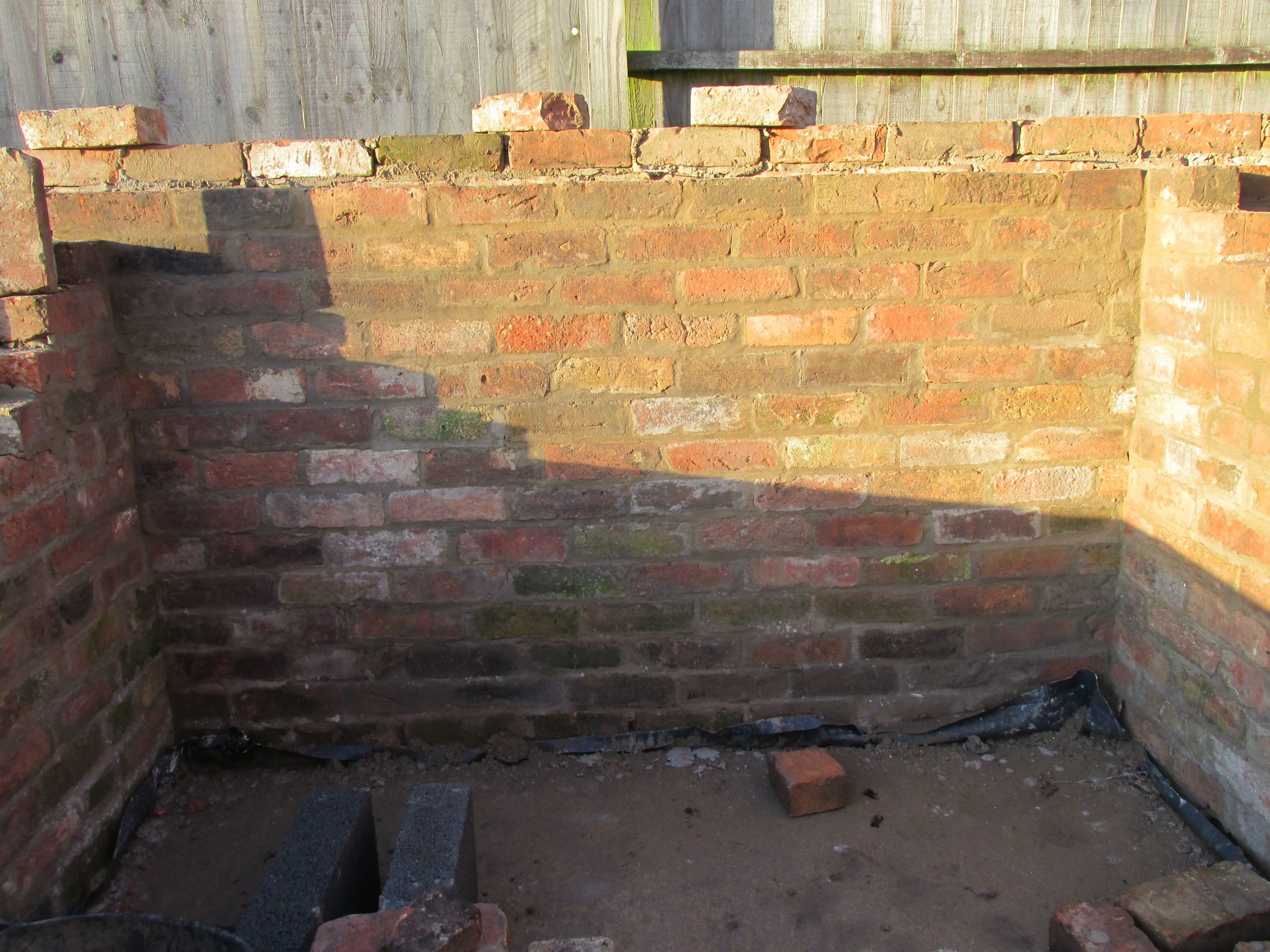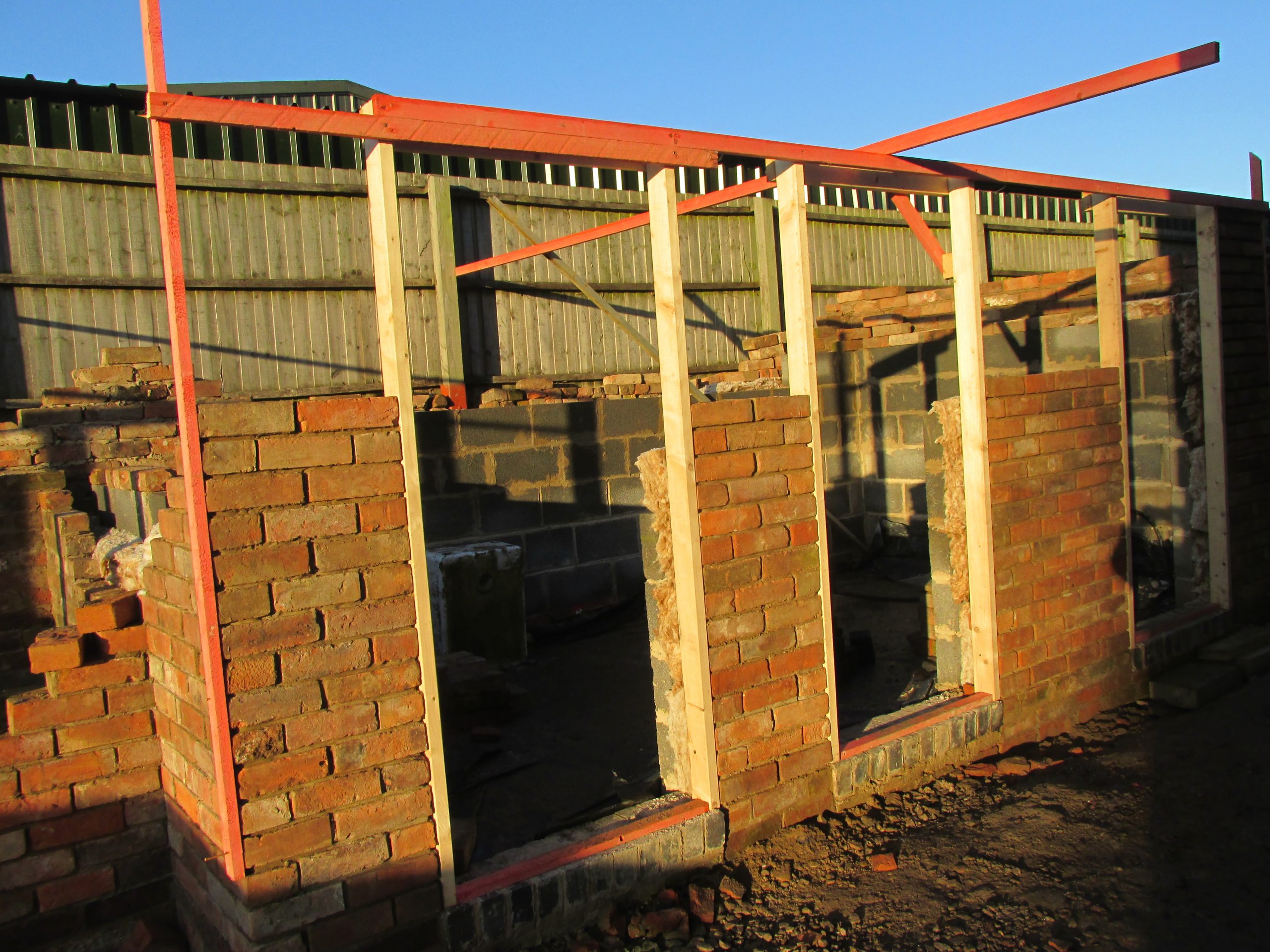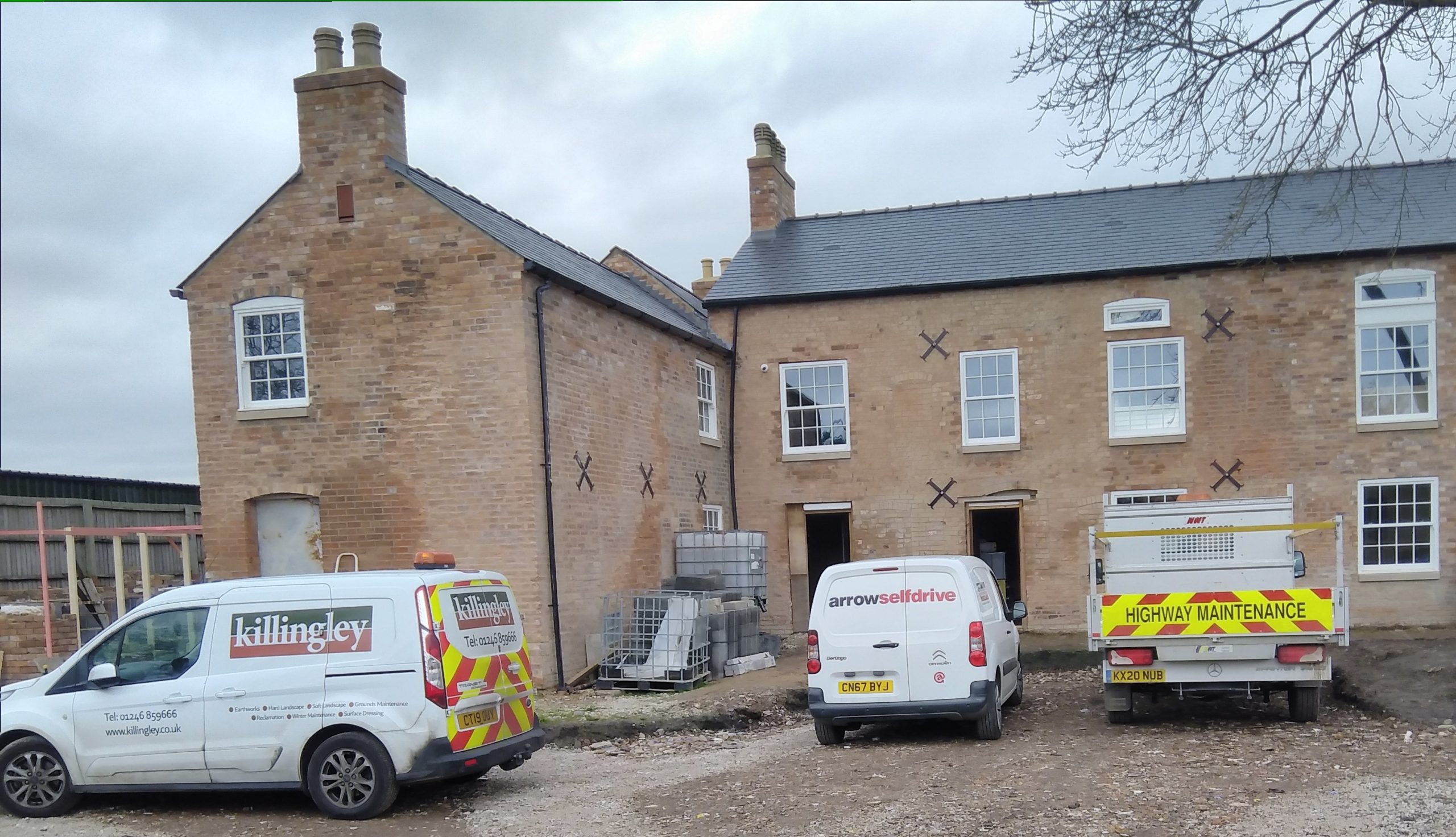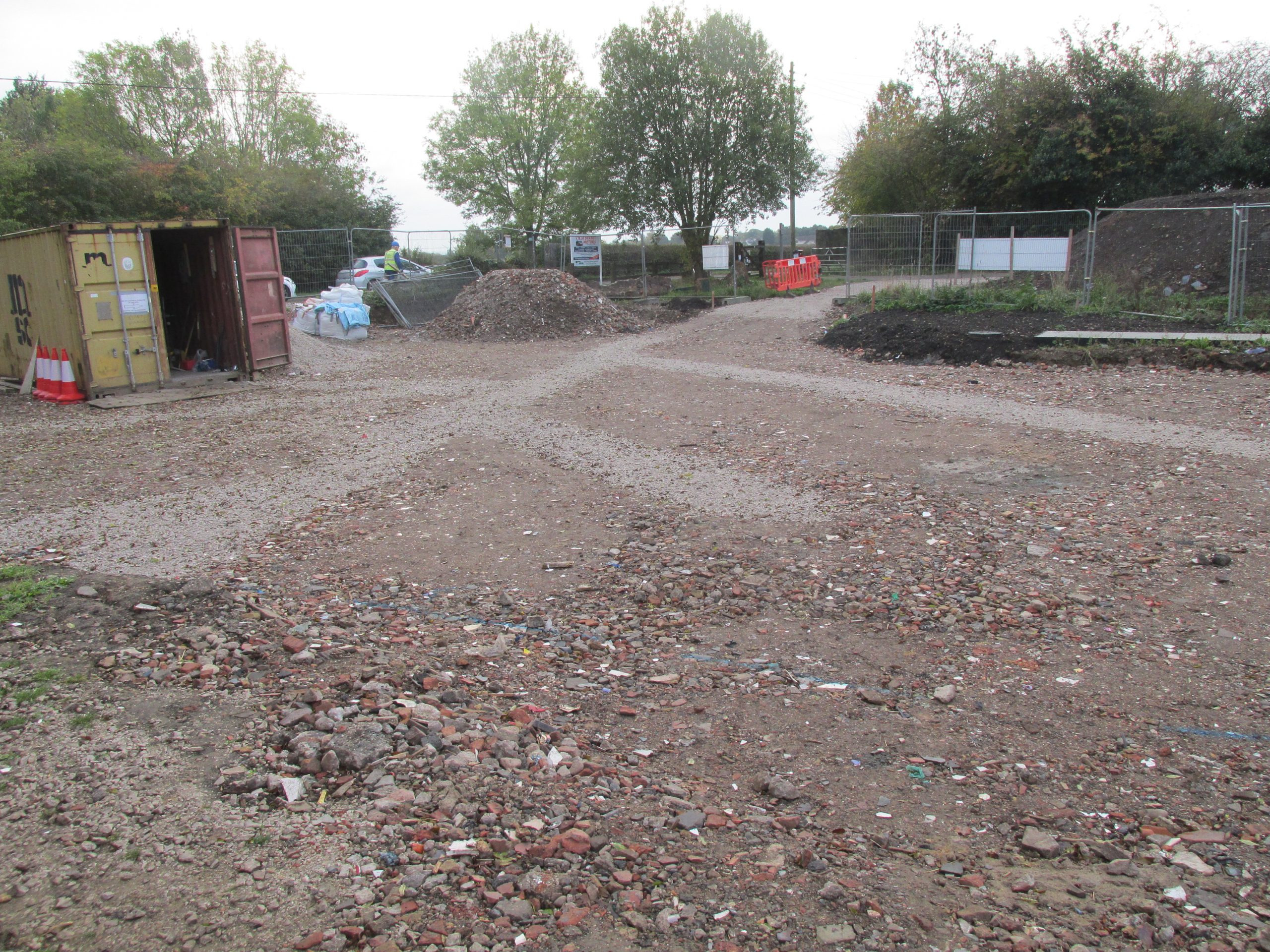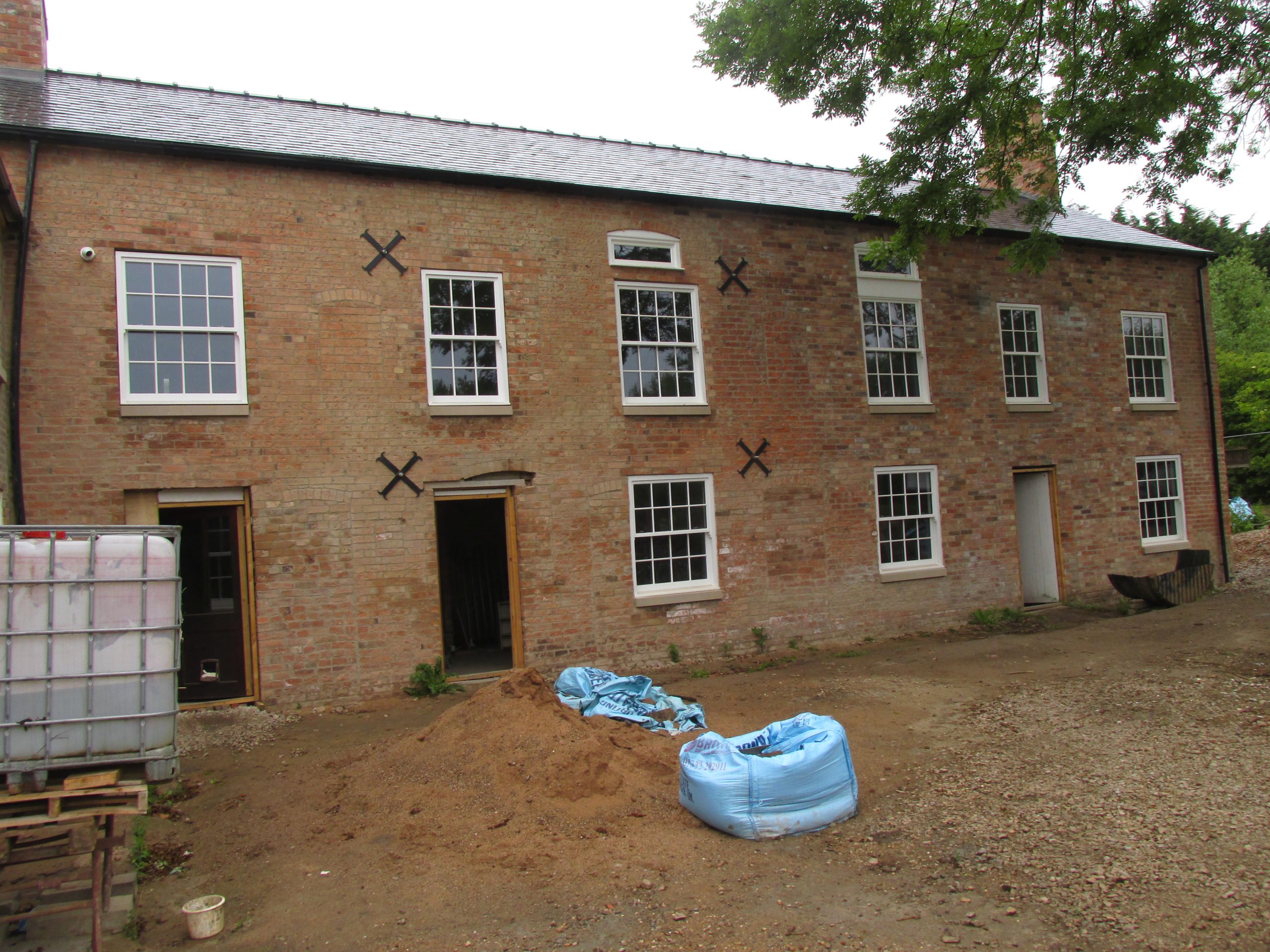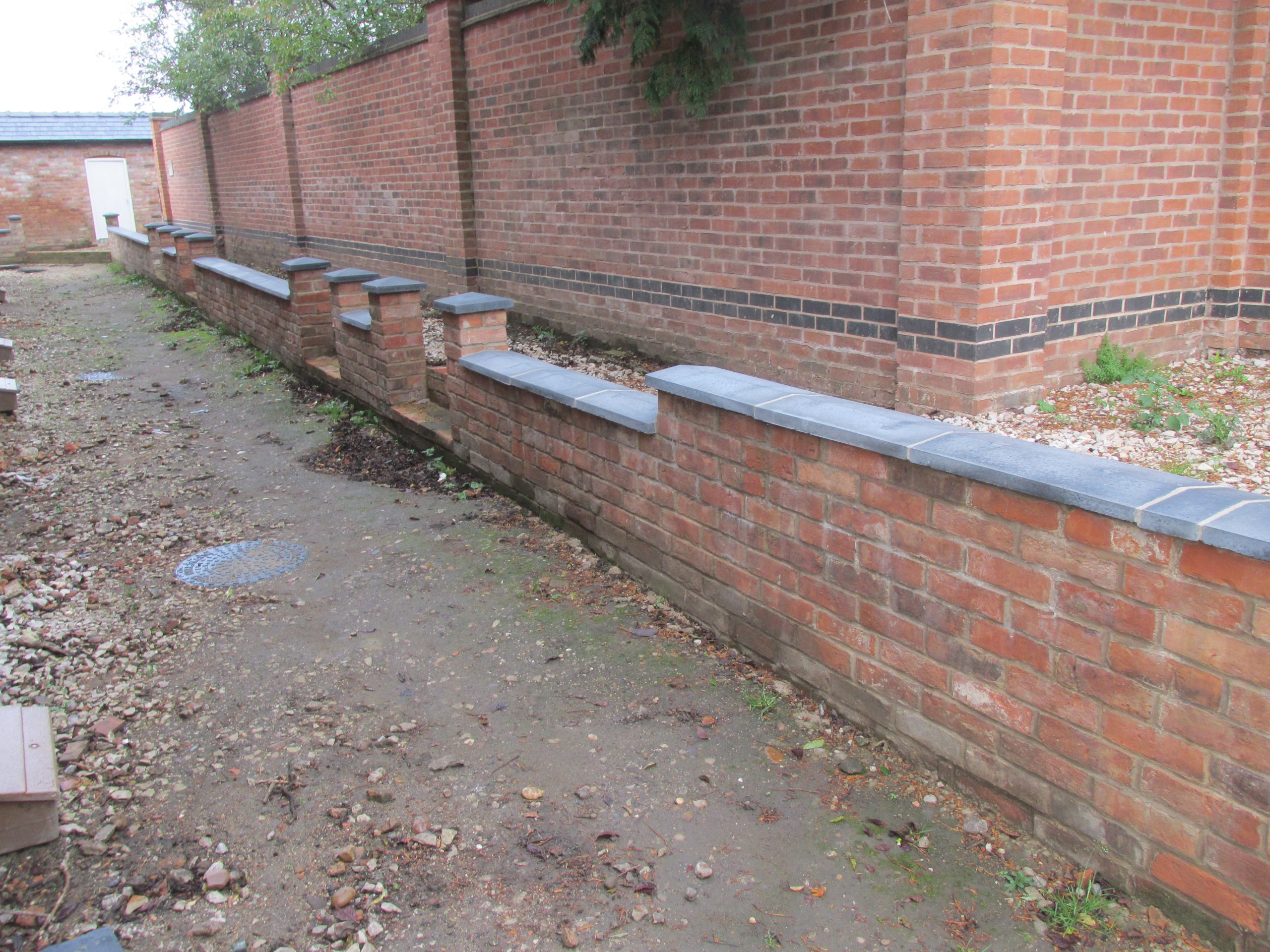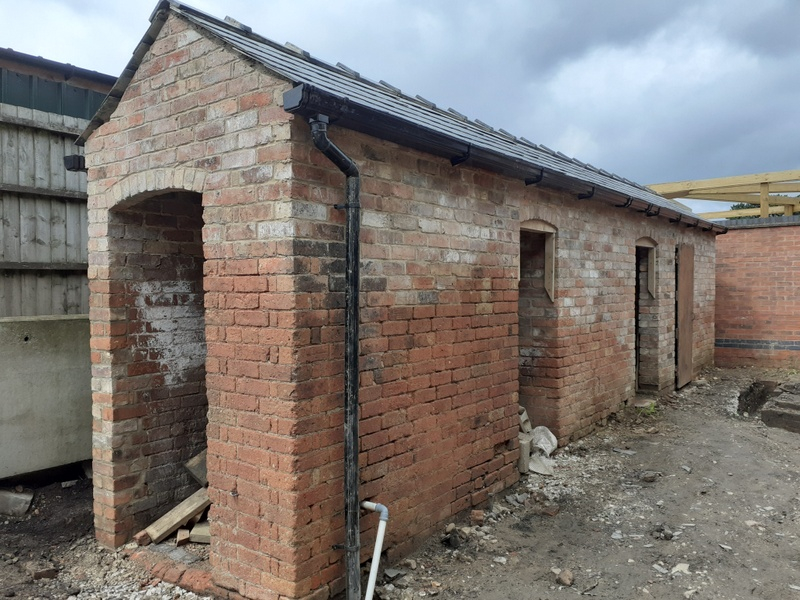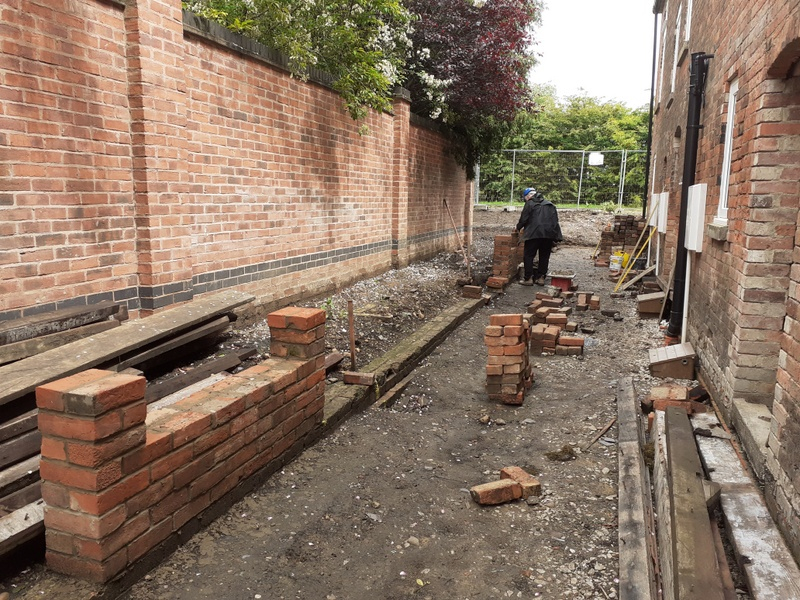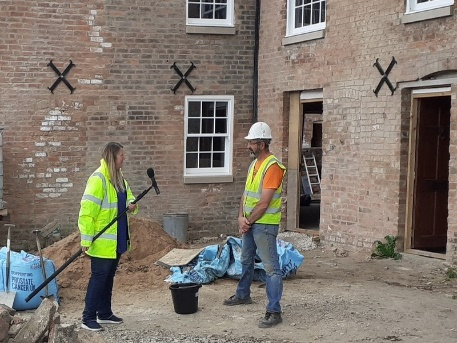The Canal Cottages
Alongside the Hopwell Road end of the Draycott ” The Golden Mile” there was a derelict building (a number of cottages), which were built at the end of the 18th century soon after the completion of the Derby Canal. The building started life as a thread or twist mill complex but, quite early in its life when the mill ceased to be viable, the building was converted into cottages, possibly as many as 6 (each 2 up 2 down with outside privies) to accommodate families working on nearby farms. Over the years the building has been changed and ended up as three dwellings.
The complex became derelict towards the end of the 20th century and the Trust was able to purchase the buildings from a local developer and has now virtually completed the restoration.
Restoration plans and funding
Plans were drawn up to restore the building, creating a mixed residential and commercial complex (see the plan to the right of the page). The residential side is three cottages, a two bedroom, one three bedroom and one four bedroom – accommodation spread over three floors in all three cottages. The ground floor of the commercial section will be a café (kitchen, reception and seating areas), with the upstairs initially used as offices/meeting rooms. There will be room downstairs that will be turned into a museum for the Trust to display pictures and artefacts. The museum room and one of the offices are to be used to provide a base for the Trust to showcase the heritage of the cottages and the wider Derby Canal. It is hoped that in the long term, the site will form a base for activities and canal line services, e.g., shower, changing room, café.
All the properties are to be let on long term leases, which will allow the loans to be serviced going forward. With the Trust retaining the freehold of the buildings, we have a valuable asset to support the future activities of the Trust.
Progress to Date
With the restoration almost complete, the list below gives an overview of the work that has had to be done to get to where we are today.
- The clearance and removal of unwanted/dangerous vegetation and trees. All the rubbish, debris and general detritus was cleared and removed from the inside of the building.
- Scaffolding was erected around the entire building, to enable a heritage-specialist builder to rebuild the main structure. All the work was done using reclaimed bricks from the main building and the dilapidated outbuildings. The majority of the internal walls were left untouched.
- All the old roof tiles were removed to provide access to the whole building. New roof timbers were installed, where needed, and the whole roof was tiled using new slates. The roof was completed in November 2019, when we held a Topping Off ceremony.
- Inside new floors were installed – ground floor was laid with a fully insulated concrete floor and screed top. On the first and second floors, all the old floor joist were removed and replaced with new. To create the new layouts, it was necessary for some internal walls to be removed, new walls to be added and doorways removed. We also needed several large pieces of steel to bear the weight of the roof.
- All the internal walls have been either plastered or plaster-boarded, again with the correct type of insulation in place. The staircases in cottages 1 and 3 have been repaired and restored, but we had to completely replace them in cottage 2.
- The water supply has been installed, via a bore hole, and a waste management system was added on-site.
- Each of the cottages have fitted kitchens (including hobs & ovens) and spacious bathrooms. Two of the cottages have separate shower rooms/en-suites. The kitchen and bathroom floors are tiled, with the rest of the rooms carpeted.
- Outside, the landscaping has been completed with railway sleepers used for retaining walls. The outbuildings have been rebuilt, using reclaimed bricks left over from the main building rebuild. The car park has been completed and finished with permeable asphalt, which allows rainwater to soak away. The car park lighting has been installed.
- The café area now has to have the new flooring laid.
- The upstairs offices have received their final coat of paint, the internal doors have been fitted. Th floors have been sanded, stained and sealed
Work to be Completed
As of February 2022, we still have some work to do:
- There is still a small amount of painting left to do in the café area and the internal doors need fitting. The café will be handed over to the tenants for them to fit out the kitchen etc and complete the decorating.
- Upstairs there is a small room that needs insulating, plaster-boarding, painting and skirting board added. This is to be a storeroom for the cafe
- There is a small room downstairs which, to date, has remained untouched. This will be used as a museum and the final look of it is still to be decided, but it will retain as much of the original as possible.
- Outside we still have to erect a perimeter fence on the Hopwell Road and canal sides of the site.
What we have achieved
For the volunteers, the restoration of the cottages has been a labour of love and we believe we have created a building which not only looks good but will last for decades to come.
As with everyone, Covid-19 has had its effect on our work and has slowed progress considerably. We had to stop work during the first lockdown, but since then the volunteers have continued to work – we are all of an age where we are all double jabbed and boosted and, in some cases caught & recovered from Covid. We grouped our volunteers into 2 people bubbles and worked more days. Now we are almost back to normal the pace of work has picked up again.
The finished complex comprises:
- Cottage 1 – a 3-bedroom cottage with a ground floor kitchen and lounge. The first floor has a double bedroom and bathroom, with 2 more bedrooms on the top floor
- Cottage 2 – a 2-bedroom cottage with a ground floor kitchen and lounge. The first floor has a double bedroom and bathroom, with a further bedroom and en-suite shower room/toilet on the top floor
- Cottage 3 – a 4-bedroom cottage with a ground floor kitchen and lounge. The first floor has a double bedroom and bathroom, with 3 further bedrooms and en-suite shower room/toilet on the top floor
- The ground floor of the commercial section will be a café, comprising kitchen, service/reception area and 2 seating areas. The small room at the back will become a museum
- The upper floor of the commercial section comprises two very large offices/meeting rooms, an entrance room off the external stairs, which is large enough for a small office. There is also a small room which will be used as storage for the café.
- Outside there are two outbuildings. One houses the water treatment equipment, a toilet for the café/Trust staff/volunteers and two store rooms. The other contains toilets for the use of the café customers, a shower/changing room for canal users and a storeroom
Gallery
The images below chart the progress of the restoration, from derelict building to what it is today!
